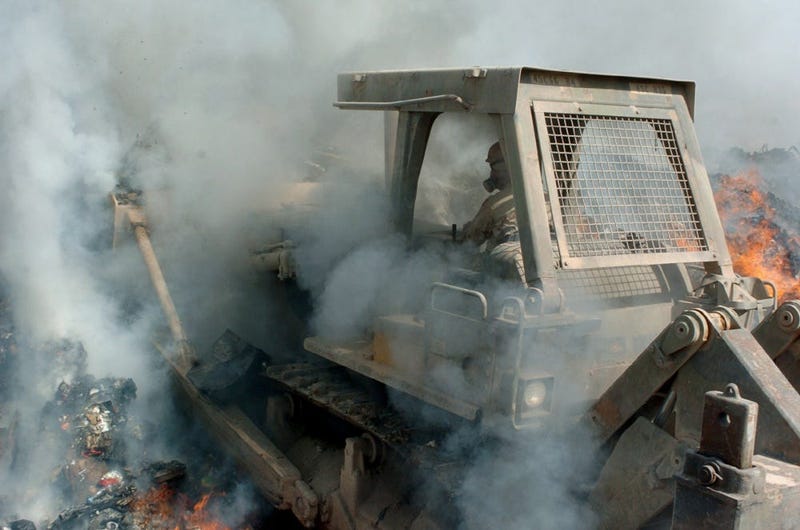
The Department of Veterans Affairs can't provide disability benefits to veterans exposed to toxicants during service after Sept. 11, 2001 until Congress passes legislation, Secretary Robert Wilkie said this week.
Wilkie told reporters on a press call Thursday that he did not have the authority to make necessary changes to provide benefits to thousands of veterans exposed to toxicants during the Iraq and Afghanistan wars. The Washington Examiner was first to report Wilkie's comments.
"Now the Congress does have to change legislation, change the statute when it comes to the categorization of disability benefits and the categorization of the percentage that a veteran is considered disabled," Wilkie said, though he prefaced by saying, "we don't deny medical services to any veteran who is sick."
Wilkie, a colonel in the Air Force Reserve and son of a Vietnam veteran, said, as he often has, that VA does not want veterans of more recent conflicts to face the decades-long wait for recognition and benefits that some Vietnam-era vets still face.
"My pledge ... as the sone of the Vietnam combat soldier is we don't want our veterans to go through what Vietnam veterans went through in terms of not knowing," he said. "But because of the disability ratings, that has to come through legislation."
Wilkie would not say whether he and Defense Secretary Mark Esper discussed conducting the studies such legislation would require, saying only that the top-ranking administration officials discussed K2 and burn pits, among a "whole host" of other issues.
"K2" refers to a secret airbase in Karshi-Khanabad, Uzbekistan, the northern staging ground for the Afghanistan invasion. A trove of recently declassified Pentagon documents revealed what may be the first official admission by the Defense Department that the former Soviet military base was a hazard.
The Pentagon documents showed the base was built on a foundation of dangerous levels of radiation. Defense officials estimated that more than 10,000 troops may have been exposed at K2.
The base, constructed quickly above what turned out to be the remains of a former chemical weapons factory, is still not part of any official toxic exposure registries at VA or the Defense Department, though news reports have detailed veterans who served on the base who have sickened and died as a result of their exposure. Those veterans have reported symptoms from gastrointestinal illnesses to rare cancers, and have described "black goo" oozing up from the ground.
VA has registries for ionizing radiation, Agent Orange, Gulf War exposures, depleted uranium from spent munitions, toxic embedded fragments and airborne hazard/open burn pits. But service members must opt-in. They are not automatically added to the registry. The registries themselves are often unwieldy or incapable of tracking trends.
VA Press Secretary Christina Noel said VA has launched a study of K2 veterans, expected to wrap up in about 18 months.
One of the biggest frustrations for advocates, veterans and their families, is that disability benefits often can be denied by the VA for a lack of evidence tying exposures to specific illnesses, and there are not "presumptive" conditions for many types of exposures. Even veterans exposed to Agent Orange decades ago still struggle to have their illnesses recognized as being connected to their service and therefore eligible for VA care. VA leaders have often cited the need for more research before presumptives can be established.
Veterans exposed to burn pits and other hazards in Iraq and Afghanistan have reported respiratory issues, cancers, fertility issues and even birth defects, though VA maintains that it has no evidence linking burn pits to long-term health issues.
More than 204,000 veterans and troops have signed on to VA's burn pit and airborne hazard registry, though VA estimates as many as 3.5 million may have been exposed.
During the height of Operation Iraqi Freedom in 2005, as many as 63 burn pits blazed across the country. At the peak of their use in both Iraq and Afghanistan, the Defense Department and military contractors operated 250 burn pits.
–
Veterans of "black goo" base to appear before Congress
Veterans exposed to burn pits could be at higher risk for COVID-19
Helping toxic exposure troops must be a top priority in 2020, veterans tell Congress
Some Gulf War veterans could be at higher risk for COVID-19, expert says
